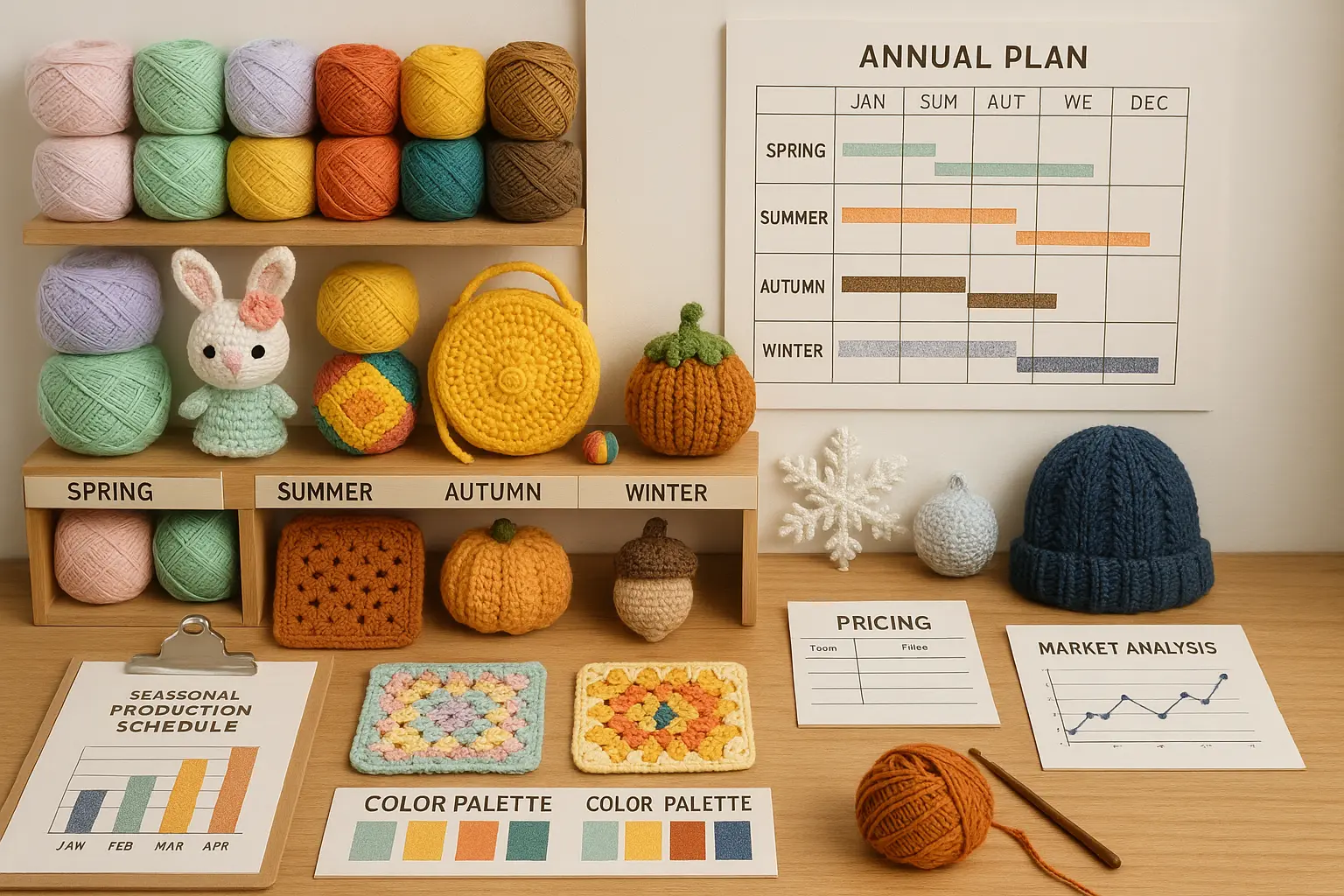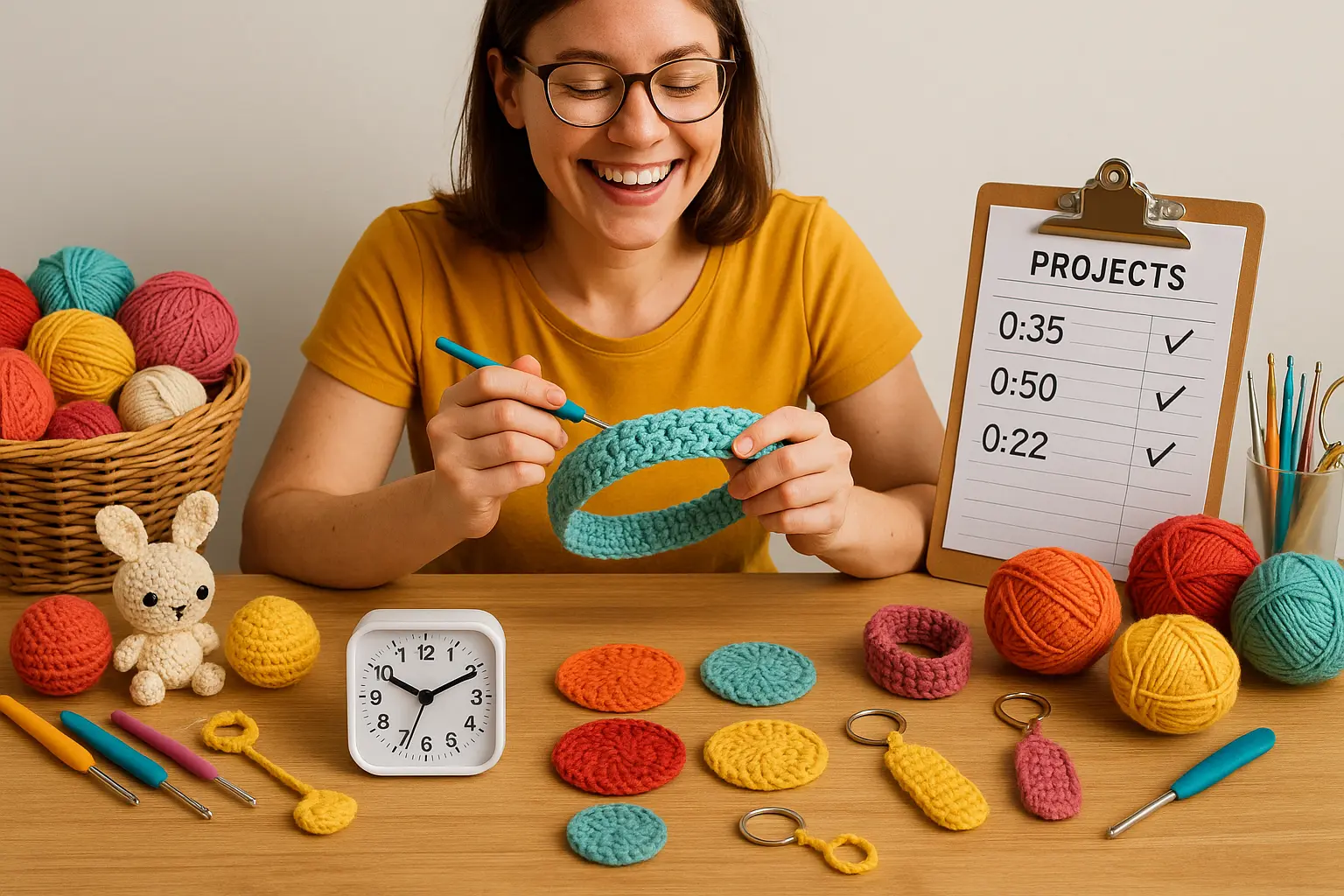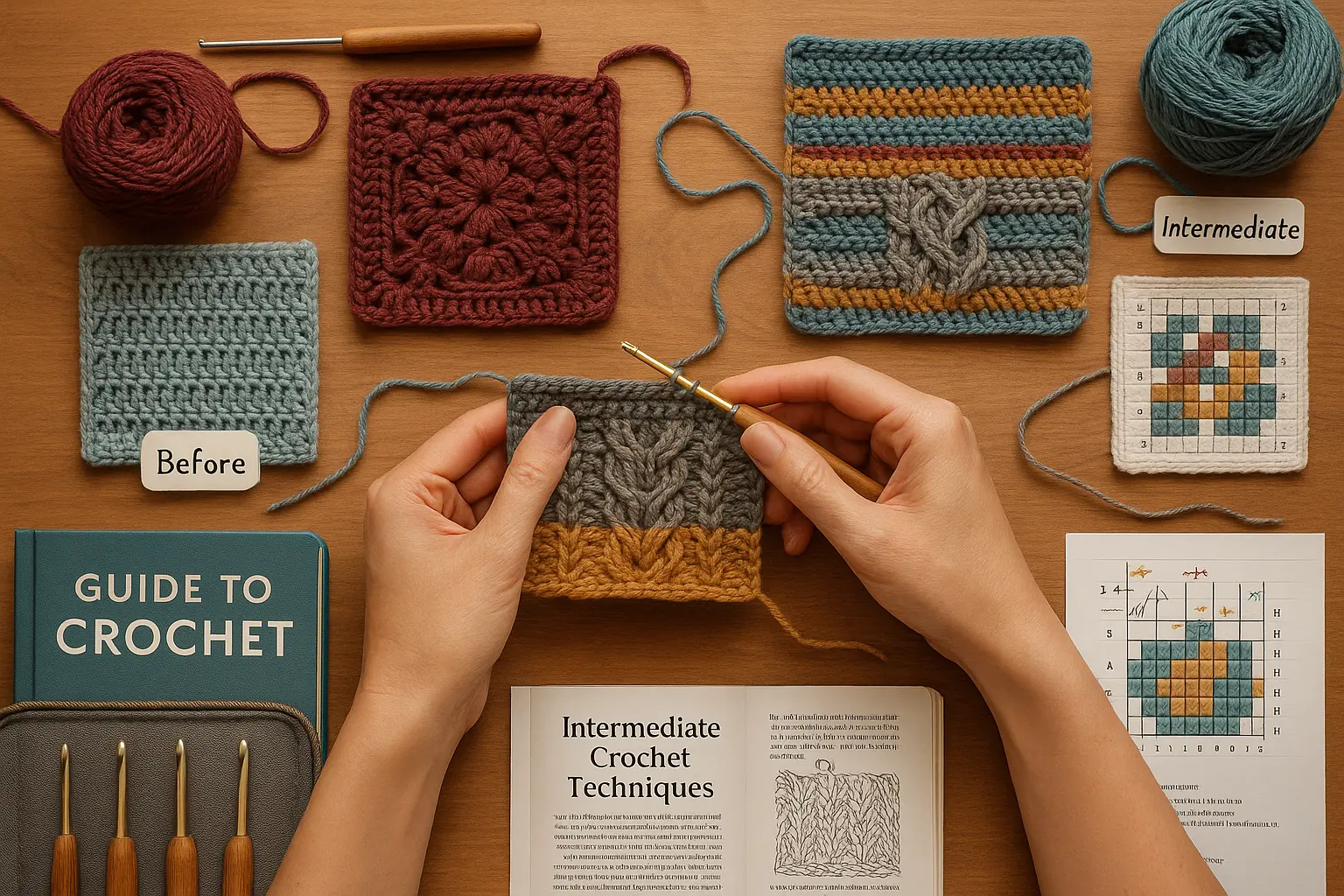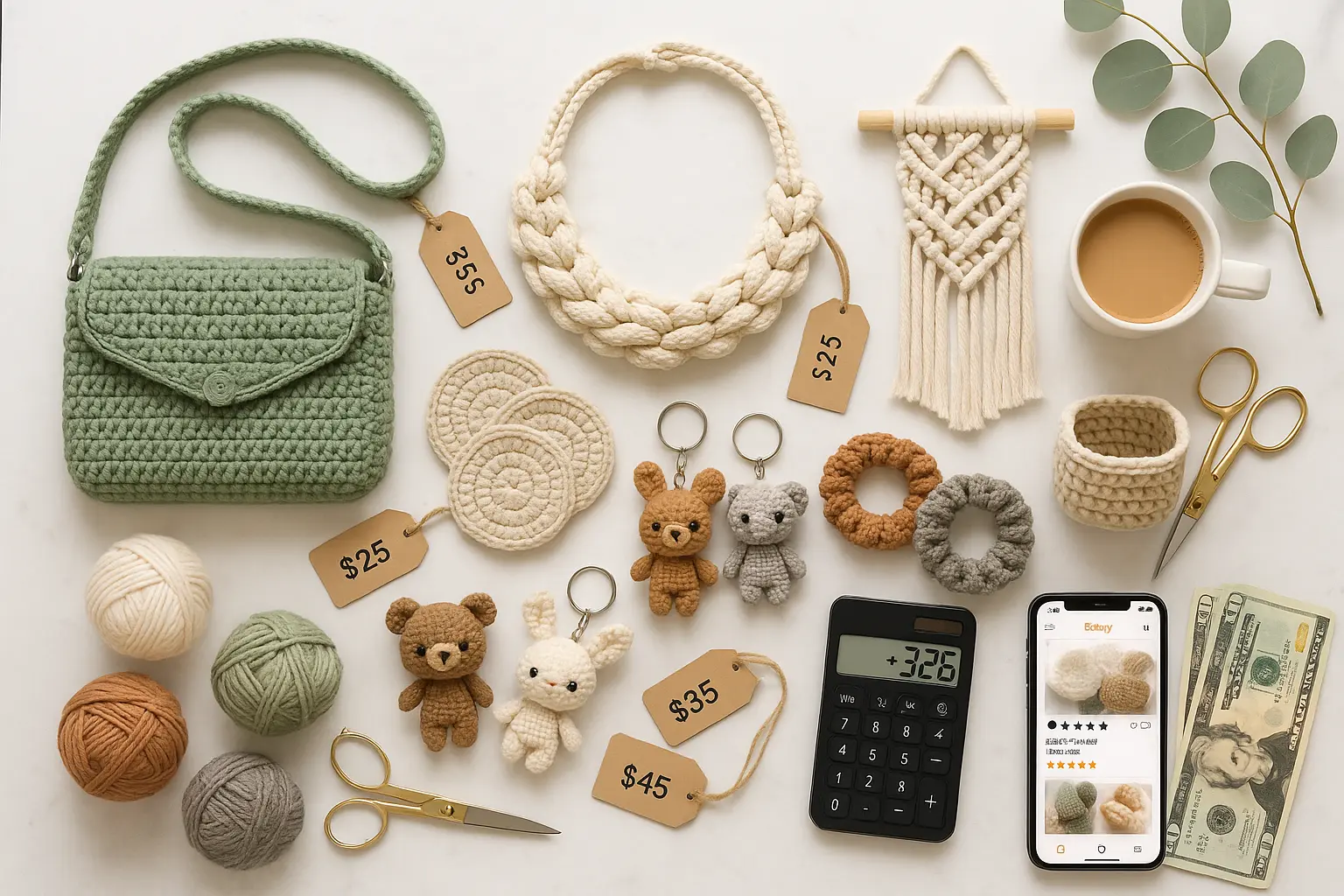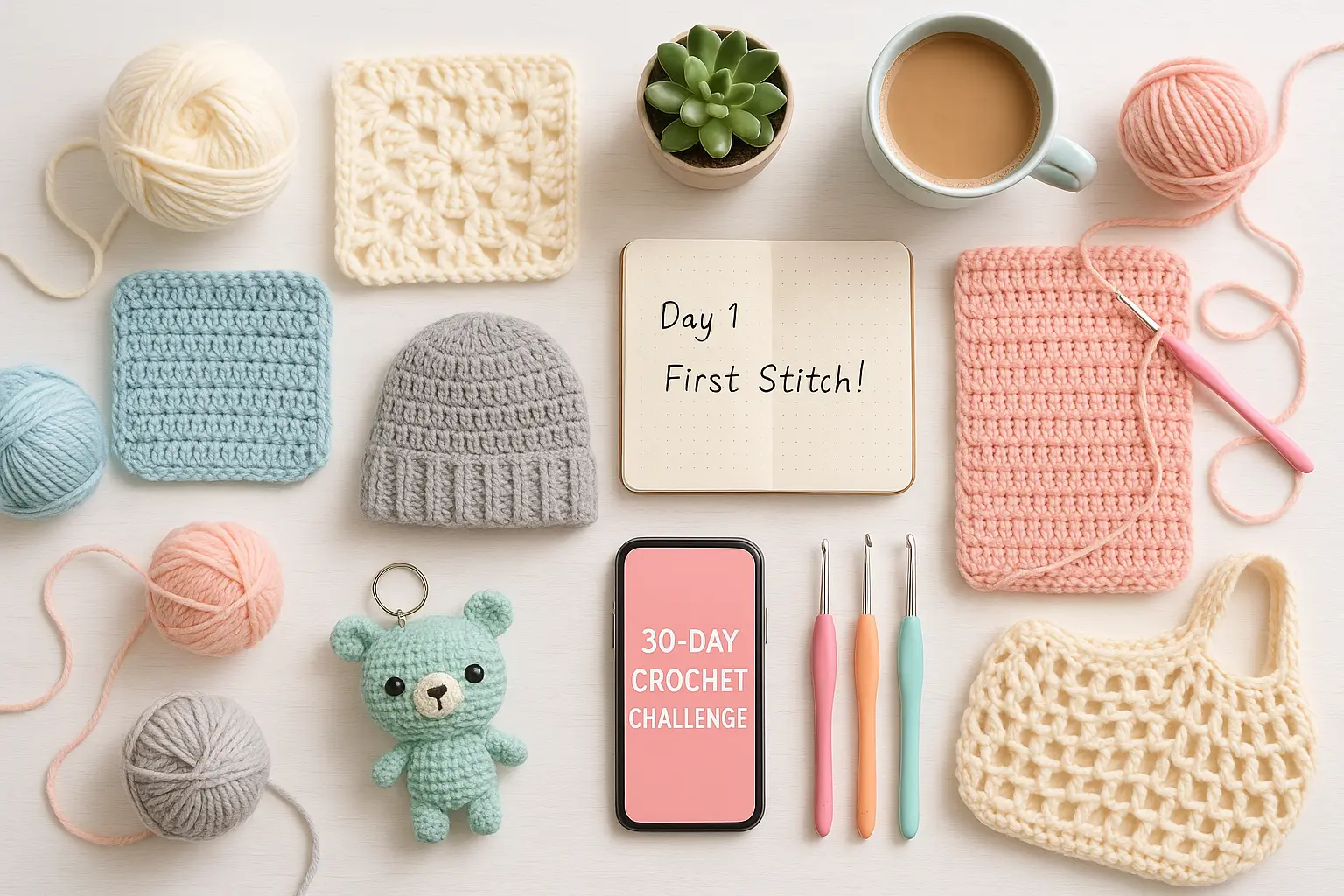Pattern mastery transforms crocheters from dependent pattern followers into confident creators capable of modifying, adapting, and designing original works. Research from the Craft Yarn Council indicates that proficient pattern readers complete projects 40% faster while achieving 60% better fit and finish compared to those who struggle with pattern interpretation. For serious crocheters, pattern literacy represents the difference between being limited to simple designs versus accessing the full spectrum of crochet possibilities, from intricate lace to complex construction projects.
This comprehensive guide reveals the systematic approach that expert crocheters use to decode any pattern, adapt designs for perfect fit, and troubleshoot construction challenges. Whether you're struggling with basic abbreviations or ready to modify complex patterns, these proven strategies help you develop the confidence and skills needed to tackle any crochet pattern successfully while building toward original design capabilities.
Strategic Pattern Selection and Analysis
Understanding how to evaluate patterns before beginning work enables better project outcomes while building pattern reading skills systematically.
Pre-Project Pattern Assessment
Skill Level Evaluation: Matching pattern complexity to current abilities ensures successful completion while providing appropriate challenges for skill development.
Pattern Complexity Indicators:
- Beginner patterns: Use 2-4 basic stitches with simple construction methods
- Intermediate patterns: Combine 5-8 stitches with shaping and multiple construction techniques
- Advanced patterns: Integrate complex stitch combinations, intricate shaping, and specialized construction
- Expert patterns: Require mastery of multiple advanced techniques with precise execution
Construction Method Analysis:
- Flat construction: Worked in rows with turning chains
- Round construction: Worked in continuous or joined rounds
- Modular construction: Individual pieces joined together
- Seamless construction: Complex shaping worked continuously without seams
Technical Requirements Assessment:
- Gauge criticality: How precisely gauge affects final outcome
- Fit requirements: Whether exact sizing is essential for function
- Special techniques: Unusual stitches or construction methods requiring additional learning
- Time investment: Realistic time commitment based on complexity and size
Learn pattern selection strategies in our Crochet Projects Collection.
Pattern Structure and Information Hierarchy
Essential Pattern Components: Professional patterns provide comprehensive information organized for efficient access and reference during construction.
Pattern Header Analysis:
- Skill level designation: Realistic assessment of required abilities
- Finished measurements: Detailed dimensions including ease and fit notes
- Materials list: Specific yarn weights, quantities, and tool requirements
- Gauge specifications: Critical measurements for accurate sizing
Construction Section Organization:
- Foundation instructions: Chain counts and initial setup
- Body construction: Main pattern work with clear repeat indicators
- Shaping instructions: Increases, decreases, and dimensional changes
- Finishing guidance: Assembly, blocking, and final touches
Support Information:
- Abbreviation glossary: Complete list of terms used in pattern
- Stitch diagrams: Visual representations of complex techniques
- Construction notes: Designer insights and troubleshooting tips
- Modification suggestions: Guidance for common adaptations
Advanced Abbreviation Mastery
Standard Abbreviation Fluency
Foundation Stitch Abbreviations: Mastering basic abbreviations enables fluid pattern reading without constant reference to glossaries.
Single Crochet Family:
- sc: single crochet - fundamental stitch for most patterns
- sc2tog: single crochet 2 together - basic decrease technique
- sc inc: single crochet increase - working 2 sc in same stitch
- sc tbl: single crochet through back loop - creates ridge texture
Double Crochet Family:
- dc: double crochet - most versatile construction stitch
- dc2tog: double crochet 2 together - standard decrease method
- dc inc: double crochet increase - 2 dc in same stitch
- dc3tog: double crochet 3 together - decorative cluster decrease
Advanced Stitch Abbreviations:
- fpdc: front post double crochet - creates raised vertical elements
- bpdc: back post double crochet - creates recessed vertical elements
- tr: treble crochet - tall stitch for quick height gain
- dtr: double treble crochet - very tall stitch for dramatic height
Specialized Technique Abbreviations
Construction Abbreviations:
- join: connect rounds or pieces using slip stitch
- turn: flip work to begin next row in opposite direction
- cont: continue established pattern or instruction sequence
- foll: follow - typically used with "foll rnd" (following round)
Shaping Abbreviations:
- inc: increase - add stitches to expand width
- dec: decrease - reduce stitches to narrow width
- short row: partial row used for gradual shaping
- wrap and turn: advanced short row technique
Pattern Repeat Indicators:
- rep: repeat - execute instructions again
- **rep from ***: repeat all instructions after asterisk
- [ ] times: repeat bracketed instructions specified number
- alt: alternate - switch between two instruction sets
Learn abbreviation mastery through our Crochet Basics for Beginners comprehensive guide.
Chart Reading and Visual Pattern Interpretation
Chart Symbol Fluency
Basic Chart Symbol System: Visual patterns provide spatial relationships impossible to convey clearly through written instructions alone.
Foundation Symbols:
- ○: chain - creates spaces and foundations
- •: slip stitch - joins and connects elements
- ×: single crochet - basic height and density
- ⊤: double crochet - standard construction height
- ⊥: treble crochet - tall architectural elements
Advanced Construction Symbols:
- ▲: increase - shows placement of additional stitches
- ▼: decrease - indicates stitch reduction locations
- ⌒: cluster - multiple stitches worked together
- ◊: popcorn - dimensional texture element
- △: shell - fan-shaped stitch combination
Directional Reading Patterns:
- Right side rows: Read charts from right to left
- Wrong side rows: Read charts from left to right
- Continuous rounds: Read charts consistently in one direction
- Joined rounds: Account for slip stitch joins and chain starts
Complex Chart Interpretation
Multi-Color Chart Navigation:
- Color coding: Different colors represent different yarns or techniques
- Symbol differentiation: Multiple symbols may represent color changes
- Strand management: Understanding when to carry vs. cut yarns
- Pattern alignment: Maintaining consistent color placement across repeats
Repeat Section Understanding:
- Pattern repeats: Sections marked for repetition across width
- Vertical repeats: Sections repeated for length or height
- Nested repeats: Pattern repeats within other repeat sections
- Partial repeats: Beginning or ending with incomplete repeat sections
Three-Dimensional Chart Reading:
- Assembly diagrams: Show how pieces connect in finished construction
- Construction sequence: Order of operations for complex assembly
- Dimensional indicators: Show depth, layering, and spatial relationships
- Orientation guides: Help maintain correct positioning during assembly
Explore advanced chart techniques in our Advanced Crochet Techniques guide.
Gauge Mastery and Sizing Control
Precision Gauge Achievement
Gauge Swatch Methodology: Accurate gauge measurement requires systematic approach that accounts for blocking, use conditions, and measurement precision.
Professional Swatch Creation:
- Adequate size: Minimum 6x6 inches for accurate measurement
- Relaxed tension: Natural working tension without forcing consistency
- Representative stitches: Include all pattern stitches in swatch
- Blocking procedure: Block swatches exactly as finished piece will be blocked
Measurement Precision:
- Multiple measurements: Take measurements at different swatch locations
- Ruler accuracy: Use quality measuring tools for precise readings
- Resting period: Allow blocked swatches to rest before final measurement
- Environmental consistency: Measure under similar conditions to final use
Gauge Adjustment Strategies:
- Hook size modification: Most common and effective adjustment method
- Tension awareness: Understanding personal tension patterns and variations
- Yarn substitution: How different yarns affect gauge achievement
- Environmental factors: Temperature and humidity effects on measurement
Advanced Sizing and Fit Optimization
Body Measurement Integration: Professional fit requires understanding relationship between body measurements, finished garment measurements, and intended ease.
Ease Calculation Methods:
- Negative ease: Finished measurement smaller than body measurement
- Zero ease: Finished measurement equals body measurement
- Positive ease: Finished measurement larger than body measurement
- Design ease: Intentional styling ease for specific aesthetic effects
Pattern Grading Principles:
- Proportional scaling: Maintaining design proportions across size ranges
- Strategic adjustment: Modifying specific areas while preserving overall design
- Construction adaptation: Adjusting techniques for different size requirements
- Fit testing: Progressive fitting during construction for optimal results
Custom Sizing Calculations:
- Mathematical approach: Using gauge and measurements to calculate stitch counts
- Pattern modification: Adapting existing patterns for custom measurements
- Construction planning: Sequencing construction for optimal fit achievement
- Quality control: Maintaining consistency across size modifications
Learn sizing mastery in our Intermediate Crochet Skills development guide.
Strategic Pattern Modification Techniques
Systematic Modification Approach
Pre-Modification Planning: Successful pattern changes require understanding construction logic and anticipating modification consequences.
Modification Impact Analysis:
- Structural effects: How changes affect garment structure and stability
- Proportional relationships: Maintaining visual balance after modifications
- Technical compatibility: Ensuring modified elements work with existing techniques
- Material requirements: Calculating yarn and time changes from modifications
Documentation Strategy:
- Original preservation: Maintaining unchanged copy of original pattern
- Modification tracking: Clear records of all changes and reasoning
- Test documentation: Results of modification testing and refinement
- Success replication: Instructions for repeating successful modifications
Advanced Modification Techniques
Stitch Pattern Substitution:
- Height matching: Substituting stitches of similar heights
- Density considerations: Understanding how stitch changes affect fabric density
- Pattern integration: Ensuring new stitches work within existing construction
- Gauge adjustment: Compensating for gauge changes from stitch substitution
Construction Method Changes:
- Seamless conversion: Converting seamed patterns to seamless construction
- Direction changes: Working patterns in different directions (top-down vs. bottom-up)
- Modular adaptation: Converting single-piece patterns to modular construction
- Joining method modification: Changing how pieces connect or integrate
Dimensional Modifications:
- Length adjustments: Adding or removing length while maintaining proportions
- Width modifications: Scaling width while preserving pattern integrity
- Shaping changes: Modifying fit through strategic shaping placement
- Style adaptations: Changing necklines, sleeves, or other style elements
Pattern Customization for Personal Style
Design Element Integration:
- Color scheme adaptation: Changing colors while maintaining design impact
- Texture addition: Incorporating different stitch patterns for visual interest
- Embellishment integration: Adding beads, buttons, or decorative elements
- Cultural adaptation: Incorporating personal or cultural design elements
Functional Modifications:
- Pocket additions: Adding functional pockets to garments and accessories
- Closure changes: Modifying button, zipper, or tie closures
- Comfort adjustments: Modifying for personal comfort preferences
- Accessibility adaptations: Modifying for physical accessibility needs
Professional Troubleshooting and Problem Resolution
Pattern Error Identification and Resolution
Common Pattern Issues: Even professionally published patterns may contain errors requiring crocheter problem-solving skills.
Error Types and Solutions:
- Math errors: Stitch counts that don't align with pattern requirements
- Instruction ambiguity: Unclear or contradictory directions
- Construction logic: Instructions that don't produce described results
- Technical impossibility: Instructions requiring impossible stitch manipulation
Resolution Strategies:
- Pattern research: Checking errata, online forums, and designer clarifications
- Logic application: Using crochet knowledge to interpret intended instructions
- Community consultation: Seeking help from experienced pattern users
- Designer contact: Reaching out directly for clarification when possible
Advanced Problem-Solving Techniques
Construction Analysis:
- Reverse engineering: Understanding how finished pieces achieve their structure
- Alternative approaches: Developing multiple solutions to construction challenges
- Prototype development: Testing solutions on small samples before full implementation
- Documentation: Recording successful solutions for future reference
Quality Recovery:
- Mistake correction: Efficiently fixing errors without complete reconstruction
- Salvage techniques: Rescuing projects with significant construction problems
- Adaptation strategies: Modifying completed work to address issues
- Prevention systems: Developing personal systems to prevent common errors
Learn troubleshooting techniques through our Expert Crochet Mastery comprehensive guide.
Business Applications of Pattern Mastery
Pattern Modification Services
Custom Pattern Adaptation: Pattern expertise enables valuable services for customers needing specialized modifications.
Service Categories:
- Size grading: Creating custom sizes not included in original patterns
- Fit optimization: Modifying patterns for specific body measurements
- Style adaptation: Changing design elements while preserving construction integrity
- Accessibility modification: Adapting patterns for specific physical needs
Professional Pricing:
- Consultation services: $25-50 per hour for pattern analysis and planning
- Modification documentation: $15-30 per modified section depending on complexity
- Custom grading: $50-150 per pattern depending on size range required
- Complete redesign: $200-500+ for extensive pattern modification
Pattern Design and Publishing
Original Pattern Development: Advanced pattern reading skills provide foundation for creating original designs.
Design Process:
- Concept development: Translating creative vision into technical specifications
- Construction planning: Determining optimal techniques for desired outcomes
- Testing protocols: Systematic testing with multiple makers for accuracy
- Documentation standards: Creating clear, professional pattern instructions
Publishing Opportunities:
- Digital pattern sales: $5-50+ per pattern depending on complexity
- Magazine submissions: $100-500+ per published pattern
- Book contributions: Royalties and flat fees for pattern collections
- Workshop development: $200-1000+ per workshop based on pattern instruction
Explore business development in our Crochet Business Success strategic guide.
Digital Tools and Technology Integration
Pattern Management Systems
Digital Organization:
- Cloud storage: Accessible pattern libraries across multiple devices
- Tagging systems: Searchable categories for efficient pattern retrieval
- Progress tracking: Digital tools for monitoring project advancement
- Modification documentation: Systems for tracking and sharing pattern changes
Professional Software:
- Pattern design software: Programs for creating professional pattern layouts
- Chart creation tools: Software for developing visual pattern representations
- Sizing calculators: Apps for mathematical pattern scaling and modification
- Gauge tracking: Digital tools for consistent gauge monitoring and adjustment
Community Integration and Learning
Online Learning Resources:
- Video tutorials: Visual instruction for complex techniques and problem-solving
- Pattern forums: Community problem-solving and modification sharing
- Designer interactions: Direct access to pattern creators for clarification
- Skill development: Online courses and workshops for advancing pattern skills
Social Learning Platforms:
- Project sharing: Platforms for sharing modifications and results
- Peer support: Community assistance for pattern challenges
- Expert consultation: Access to professional pattern help and guidance
- Collaborative development: Community pattern testing and refinement
Learn digital integration through our Kit Crochet Resources comprehensive guide.
Advanced Pattern Creation and Documentation
Professional Pattern Writing
Technical Writing Standards: Creating clear, testable patterns requires systematic approach to instruction development.
Essential Elements:
- Complete material lists: Specific yarns, quantities, and tool requirements
- Accurate gauge specifications: Critical measurements with testing instructions
- Step-by-step instructions: Logical sequence with clear transition points
- Quality control notes: Guidance for achieving professional results
Testing and Refinement:
- Multi-tester validation: Patterns tested by multiple skill levels
- Error identification: Systematic error detection and correction
- Clarity optimization: Refining instructions for maximum understanding
- Accessibility consideration: Instructions usable by diverse learning styles
Intellectual Property and Legal Considerations
Copyright Understanding:
- Original design protection: How copyright applies to original patterns
- Modification rights: Legal boundaries for modifying existing patterns
- Commercial usage: Rules for selling modified or derivative patterns
- Attribution requirements: Proper crediting of inspiration sources
Professional Standards:
- Industry ethics: Professional standards for pattern design and modification
- Customer service: Supporting pattern users through challenges and questions
- Quality assurance: Maintaining reputation through consistent quality delivery
- Continuous improvement: Updating patterns based on user feedback and error reports
Master Pattern Skills for Creative Freedom
Pattern mastery represents the gateway to creative independence in crochet, enabling confident navigation of any design while building capabilities for original creation and professional service delivery. The systematic development of pattern reading, modification, and troubleshooting skills transforms dedicated crafters from pattern dependent makers into design-confident creators.
Professional pattern skills create opportunities for enhanced personal projects, valuable services to other crafters, and potential business development through design, instruction, and consulting. This comprehensive capability enables full participation in the creative potential of crochet while building expertise valued by the broader crafting community.
Mastery Insight: Advanced pattern readers consistently report that developing systematic pattern skills was the turning point that enabled them to tackle any project confidently while opening opportunities for original design development and professional teaching.
The key lies in understanding pattern reading as a systematic skill set rather than project-by-project learning, approaching each pattern as an opportunity to build transferable knowledge and capabilities that enhance all future crochet endeavors.
Develop Master-Level Pattern Skills Today
Ready to transform your pattern reading abilities from basic interpretation to confident mastery? Our Complete Amigurumi Mastery Bundle includes comprehensive pattern reading instruction, modification techniques, and design development guidance that has helped over 900 students develop professional-level pattern skills while building successful crochet practices.
The bundle provides systematic skill development from basic abbreviation fluency through advanced modification techniques, plus business applications that enable monetizing pattern expertise through services and original design development.
Discover how pattern mastery creates unlimited creative freedom - join confident crocheters who understand that systematic pattern skills unlock the full potential of the craft while building valuable professional capabilities.
Additional Resources for Pattern Mastery
Foundation Skills:
- Crochet Basics for Beginners - Essential foundation for pattern reading
- Intermediate Crochet Skills - Building toward advanced pattern work
- Advanced Crochet Techniques - Complex techniques for challenging patterns
- Expert Crochet Mastery - Professional-level pattern expertise
Pattern Applications:
- Crochet Projects Collection - Practice patterns for skill building
- Long-Term Crochet Projects - Complex patterns requiring mastery
- Quick Crochet Projects - Efficient pattern practice opportunities
Business Development:
- Crochet Business Success - Monetizing pattern expertise professionally
- Kit Crochet Resources - Comprehensive learning and business guidance
External Resources:
- Craft Yarn Council - Industry standards and pattern conventions
- Ravelry - Pattern database and community problem-solving
- Crochet Guild of America - Professional development and education
Pattern mastery transforms crochet from pattern-dependent crafting into creative freedom supported by comprehensive technical understanding. This expertise enables unlimited project possibilities while building professional capabilities valued throughout the crafting community.


